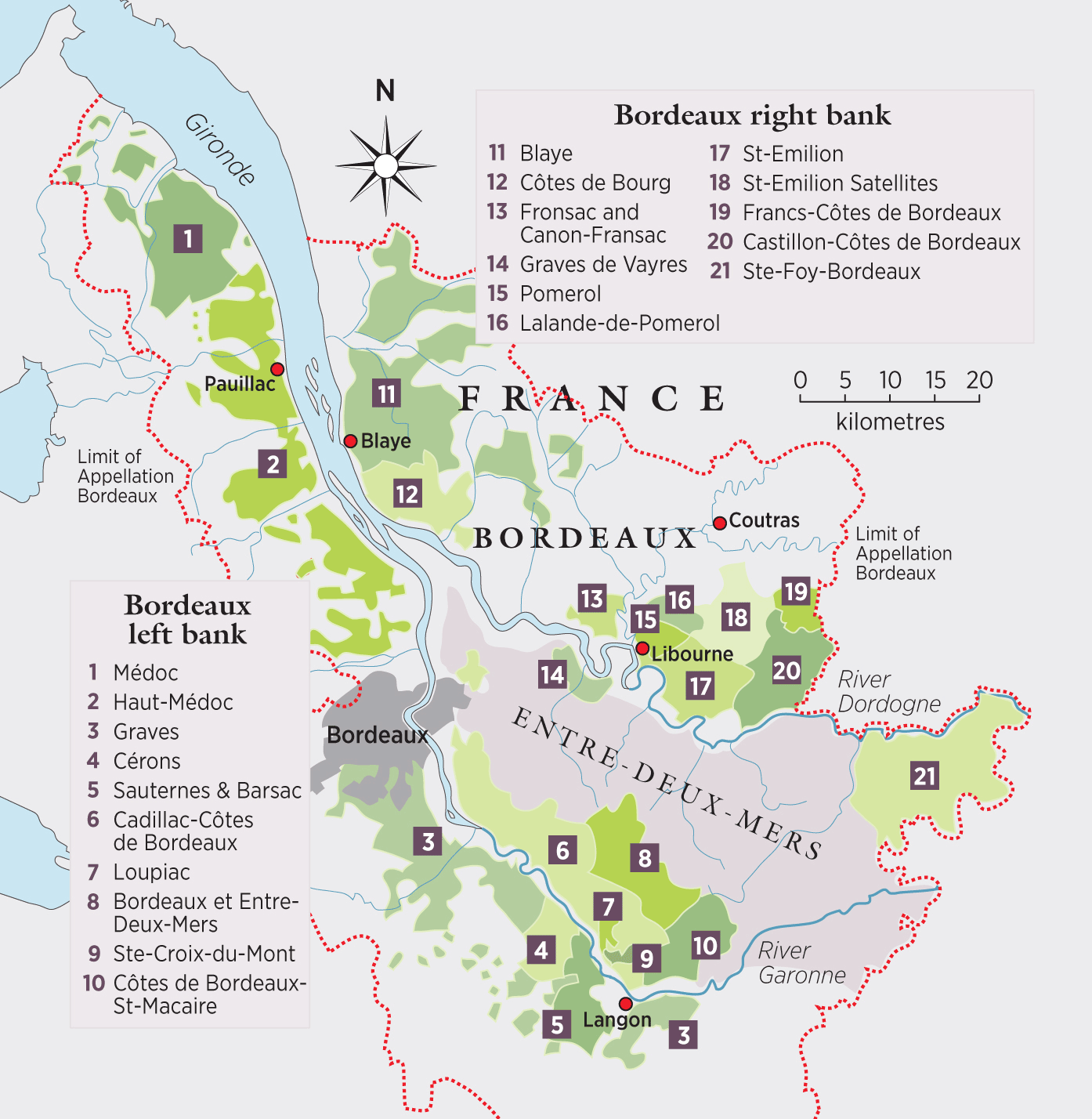A new dawn beckons for the Médoc's white wines
Changes are afoot for the white wines of the Médoc...
Bordeaux, with its many chateaux and the renowned 1855 Classification, is a leading destination for wine lovers, as well as the bedrock of the fine wine market and a benchmark for winemakers around the world.
Appellation overviews: Pauillac 2021, St-Estephe 2021, St-Julien 2021, Margaux 2021, Pomerol 2021, St-Emilion 2021 | Pessac-Léognan 2021 | Sauternes & Barsac 2021 | Médoc & Haut-Médoc, Moulis & Listrac 2021 | Smaller appellations 2021 | White Bordeaux 2021

Bordeaux is often carved along its rivers, with the left bank on the Atlantic Ocean side of the rivers Gironde and Garonnne, and the right bank to the right and north of the Dordogne river, which also feeds into the Gironde. The area in between the rivers is known as Entre Deux Mers – literally, ‘between two seas’ in French.
The region is home to a plethora of the world’s best known wine estates, but they comprise only a small proportion of the area’s 120,000ha of vines that stretch right across the Gironde department in Aquitaine and likely trace their ancestral roots back around 2,000 years to when the Romans ruled the area.
There are 57 appellations across Bordeaux, making it the biggest producer of appellation wines in France.
An appellation that stretches from Blanquefort in the south to past St-Estèphe in the north, with vines planted across 15 communes providing the most varied range of styles in all the left bank.
With 1,100ha it only has a few less than St-Estèphe, and a very wide variety of soils.
With its 900ha sandwiched between St-Julien in the south and St-Estèphe in the north, Pauillac proudly resembles neither. The Pauillac style is varied; the fragrance of Lafite, the severity of Latour and the sumptuousness of Mouton making this point strongly, the base being a density of flavour and a firmness that needs time to open up.
With only five of the Medoc’s 62 crus classés, St-Estèphe might be seen as less able to compete for attention, but it’s the variety of styles allied to a certain robust solidity from the more clayey soils that makes it a sure bet.
Always the most homogeneous commune in the Médoc, with 80% of its 775ha devoted to crus classés.
Soils range from clay to gravel and limestone. Premiers grands crus such as Ausone and Cheval Blanc are the equal of the left bank first growths.
Home to tiny estates and ‘garagistes’, Pomerol lacks any official classification but is home to titans such as Petrus. Levels of dense blue clay in the vineyards are among the highest in the world.
Home to some of the most famous botrytis wines, such as Château d’Yquem.
The designated red grape varieties in Bordeaux are Cabernet Sauvignon, Merlot, Cabernet Franc, Petit Verdot, Malbec and Carmenere.
In general, the left bank is known for its Cabernet Sauvignon-dominated wines and the right bank for its Merlot.
The main white varieties are Sémillon and Sauvignon Blanc, the former being the foundation of Bordeaux’s sweet wines of Sauternes and Barsac.
Bordeaux is also known for producing excellent dry white wines, for example under the AOC Graves or AOC Bordeaux labels.